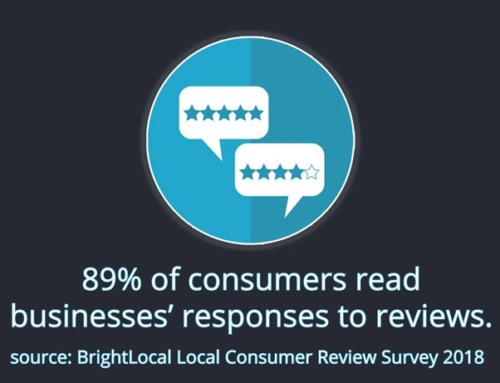
What does your PR plan look like for the New Year? Do you have a defined public relations (PR) strategy? PR includes press releases but should take a broader look. (Yes, PR is much more than a press release.) It also includes how your business communicates with your shareholders (for public companies at least), board of directors, employees, customers and prospects, as well as the outside community. Having a PR plan for the New Year is important, so that you can align how and when you will communicate with your key audiences tied to your overall business strategy. Here are some key PR considerations for the New Year.
Do you already have an email system to communicate with your key audiences? Is it working effectively and giving you the analytical data to indicate how well you’re communicating? Look at your delivery rates, open rates and click-through rates to measure how effective your email outreach is. Establish a baseline and goals for improvement. How often your content is shared speaks volumes about the quality you’re delivering. Add a “share” feature to your emails to measure this factor.

If, however, you’re still emailing from your own email address, you need to upgrade to a bona fide email system. It doesn’t have to be expensive and is a valuable tool. Otherwise, your emails are likely being classified as spam and the damage you’re doing to your company’s domain name is serious.
Do you have updated contact information for each of your key audiences? If you haven’t reached out to your various contacts in a few months or more, you may need to clean up the lists to account for moves, retirements, etc. Good, old-fashioned phone calls are a great way to reach out to your contacts with a positive message, update their contact information (including phone numbers) and stay top-of-mind with your contacts. Don’t overlook the power of a phone call.
Similarly, your database of reporters and social media influencers needs to be up-to-date and include  details such as recent stories that these contacts have recently covered. Depending on your PR budget, you may be able to outsource the list of journalists to an outside marketing firm or work with a media list service that pulls together the right reporters and influencers for your industry and how to contact them. Maintaining this list and adding your own details about responses to pitches is critical for long-term relationship building. Remember: reputations are not built in a day. PR is a marathon, not a sprint.
details such as recent stories that these contacts have recently covered. Depending on your PR budget, you may be able to outsource the list of journalists to an outside marketing firm or work with a media list service that pulls together the right reporters and influencers for your industry and how to contact them. Maintaining this list and adding your own details about responses to pitches is critical for long-term relationship building. Remember: reputations are not built in a day. PR is a marathon, not a sprint.
Identify the most important things to communicate with each of your audiences. Different audiences will care about different initiatives or at least have a different angle on those. Customize your communication to each group and take account of the best time to deliver your message.
For instance, your internal staff needs to know what the 2019 strategy and goals are. Your leadership team needs to know more specifically its role in achieving those goals and, of course, how management will be held accountable and measured. Consider how the outside community could be impacted by your annual goals and the steps your organization takes. Your customers and prospects will likely be interested in a new initiative, but others who live and work in your community may also want to know. Is there a charitable angle to any of your efforts? Does your new product or service change how your industry performs? These are things that the greater community may find of interest.
As a team, brainstorm on which communications are essential to each of your audiences and why. Document the key concerns and interests of each group, so that your business can properly address those. Taking this a step further, consider why it matters to the recipient of the news. How does it impact people beyond your company walls? Your company’s anniversary doesn’t necessarily warrant media attention. If it isn’t newsworthy, consider what you need to build in to change that or put the topic to the side.
The timing of your delivery is important, too, so think through when you communicate. Assign each topic to the most relevant month and think through which subjects should be delivered early in the month versus at the end.
Do you have gaps in your communication calendar? Look at the cyclical nature of your business. Which months or seasons tend to be slow? Could you plan certain PR outreach in advance of those traditionally slow periods to generate more sales? If your team exhibits at tradeshows, plan ahead to publish a press release with details on your participation in those conferences as well as how and why prospects should meet you there. Why should attendees visit your booth over the others? Include your booth location and any events your company is hosting such as a happy hour during the conference. This gives people specifics on how and when to meet your business.
or seasons tend to be slow? Could you plan certain PR outreach in advance of those traditionally slow periods to generate more sales? If your team exhibits at tradeshows, plan ahead to publish a press release with details on your participation in those conferences as well as how and why prospects should meet you there. Why should attendees visit your booth over the others? Include your booth location and any events your company is hosting such as a happy hour during the conference. This gives people specifics on how and when to meet your business.
Going through these exercises, your business should develop a good calendar for the PR you’d like to conduct each month. Sure, some exciting opportunities may arise throughout the year and provide additional opportunities to reach out to your team, your customer base and the media. Still, starting with a PR plan is essential. Give your strategy some real momentum by assigning point people to each topic. Outline expectations and deadlines upfront. With this, your team is ready for a year full of fruitful visibility.









